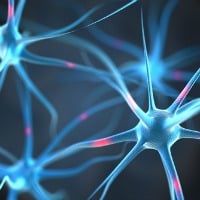Scientists from Penn State have discovered the dynamic processes in which stem cells can be turned into motor neurons. They have also uncovered the cellular mechanisms that control the programming of the stem cells. In this field of research, there is interest in using motor neurons to study diseases like Spinal Muscular Atrophy and ALS. Researchers are hoping to detail the mechanisms that control the direct programming of stem cells as they generate motor neurons. The study is helping researchers develop methods to use stem cells to generate other cell types through direct programming. This technique could eventually be used to repair or regenerate damaged cells in the body. This fascinating study was published in the journal Cell Stem Cell and describes the challenges of this new technology, and its future potential.
Stem Cell to Motor Neuron Mechanisms
Despite the potential of the direct programming technique, it is inefficient due to the complexity at the molecular level. However, the new study has opened new avenues of approach for more advanced methods of gene therapy. But in earlier studies, the same researchers successfully used embryonic stem cells from mice and turned them into motor neurons. This process took about two days to complete. The researchers then analyzed this transformation to better understand the mechanisms at both the cellular and genetic levels.
Scientists used a cocktail of transcription factors involving gene expression and modifications to the chromatin which forms chromosomes within cells. The efficiency of this embryonic method on mice has given the researchers details of the mechanisms taking place within cells. Their success rate of stem cell to motor neuron transformation is over 90 percent. The embryonic method differs from direct programming which completely replaces the gene transcription network with a new one within the cell.
Three Transcription Factors (Isl1, Ngn2, Lhx3)
The programming of stem cells into neurons appears to be a complexity that depends on three different transcriptional processes. Two transcription factors called Isl1 and Lhx3 work together to make changes to the structure of the chromatin and perform cellular gene expression. Another transcription factor called Ngn2 acts independently of the other two. In the latter stage of transformation, Ngn2 helps the other two factors complete the process, and stem cell to motor neuron conversion is complete.
The direct programming technique is seen as having more potential as it can be performed both outside and inside the body at the location of cell damage. Given the complexities of the procedure, many scientists question its viability at this early stage. But the new knowledge gained in this study will give hope for future applications to manipulate and repair or replace cells in the brain and spinal cord which are destroyed by diseases like ALS and Spinal Muscular Atrophy.




